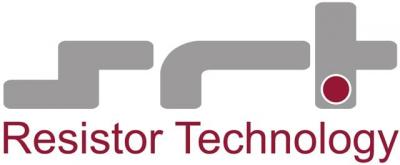SRT Resistor Technology GmbH
- Manufacturer
- Germany
- Website
- Send request
- Phone
SRT Resistor Technology GmbH
- Manufacturer
- Germany
- Website
- Send request
- Phone
- ISO 9001:2015
- REACH
- RoHS
28.06.2025 02:06
Non-magnetic chip resistors and chip capacitors
The special technological feature of these components manufactured by SRT Resistor Technology GmbH and SRT Microcéramique Sarl is based on the material of the contact layers, which do not contain nickel and are therefore non-magnetic. These contact layers consist of precious metal alloys such as PtAg or PtPdAg in the form of thick-film pastes, which are applied to the contact surfaces of the components using a rolling or dipping process and baked at around 850ºC
Components with these contact surfaces can be contacted with the usual SMD soldering processes if the precious metal alloy and the processing methods are selected accordingly, but are also suitable for contacting with conductive adhesives containing silver, as no unstable interfaces can form between tin and silver
The main application of these non-magnetic components is in medical technology in the field of magnetic resonance imaging and computer tomography (MRI, CT), where the electronic circuits are exposed to high magnetic fields. The possibility of contacting by conductive bonding is used in areas of application where soldering processes cannot be used, as the relatively high soldering temperatures would damage other components or where unhoused semiconductors are processed at the same time, e.g. in safety-relevant areas of the automotive industry.
Another special feature of thick-film chip resistors with PtAg or PtPdAg contacts is their suitability for high-temperature applications above the usual maximum temperature of 155ºC. As these resistors do not contain any organic material or tin layer and the processing temperature of all materials is in the range of 850ºC, a significantly higher application temperature is possible even under electrical load. The resistance properties remain unchanged up to 300ºC. The limitation of the application temperature is primarily limited by the solder used for contacting, whereby there should be a difference of at least 30ºC between the solder temperature used for contacting and the maximum temperature occurring in the application. However, ceramic chip capacitors with non-magnetic contact surfaces are not suitable for such high-temperature applications due to their internal technological structure.
When using standard soldering methods for processing such non-magnetic components, there is usually a difference compared to components with tin-plated contact surfaces. As the PtAg or PtPdAg surfaces do not have the same affinity to tin in the solder bath or in the reflow process as the tinned surfaces, the same shape of solder meniscus does not form. However, if the soldering on the PCB has been carried out correctly, this solder joint still has the same strength.
More News
20.10.2025 01:05
SRT Resistor Technology GmbH at electronika in Munich01.11.2024 01:05
SRT Resistor Technology GmbH at the electronica trade fairat November 12 - 15, 2024
Messe München
Munich / Bavaria
Trade fa...
02.07.2024 01:05
SRT Resistor Technology GmbH at electronica Chinaelectronica China
08. – 10. Juli 2024
SNIEC – Shanghai / P.R. C...
26.07.2023 01:00
High temperature chip resistors up to 300°CBased on many years of proven manufacturing processes for chip resistors, SRT Resistor Technology...
29.06.2023 01:00
High-ohm chip resistors with precision dataBy optimizing the layout and printing technology, SRT Resistor Technology GmbH has succeeded in e...

